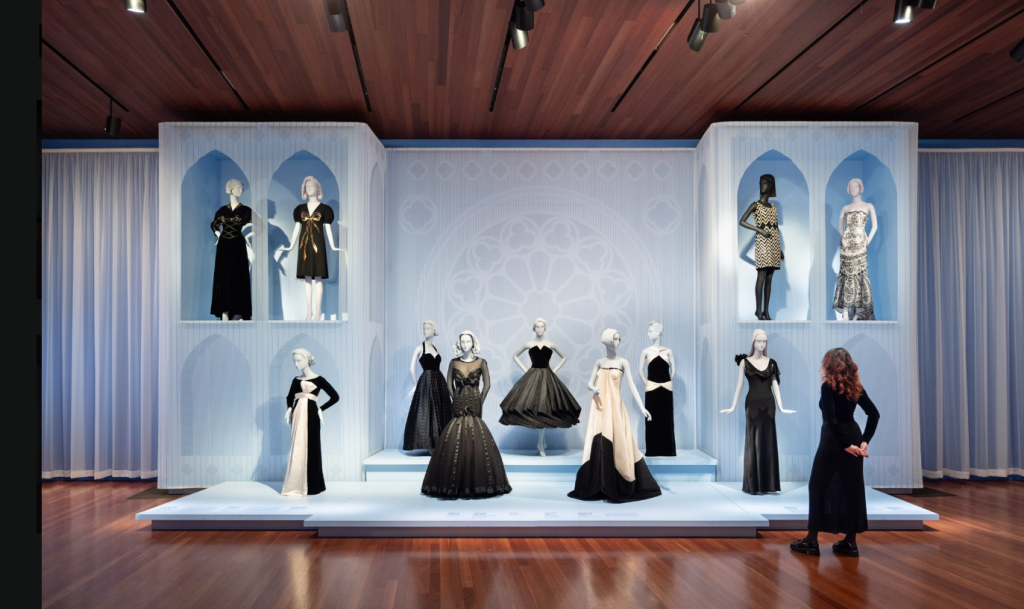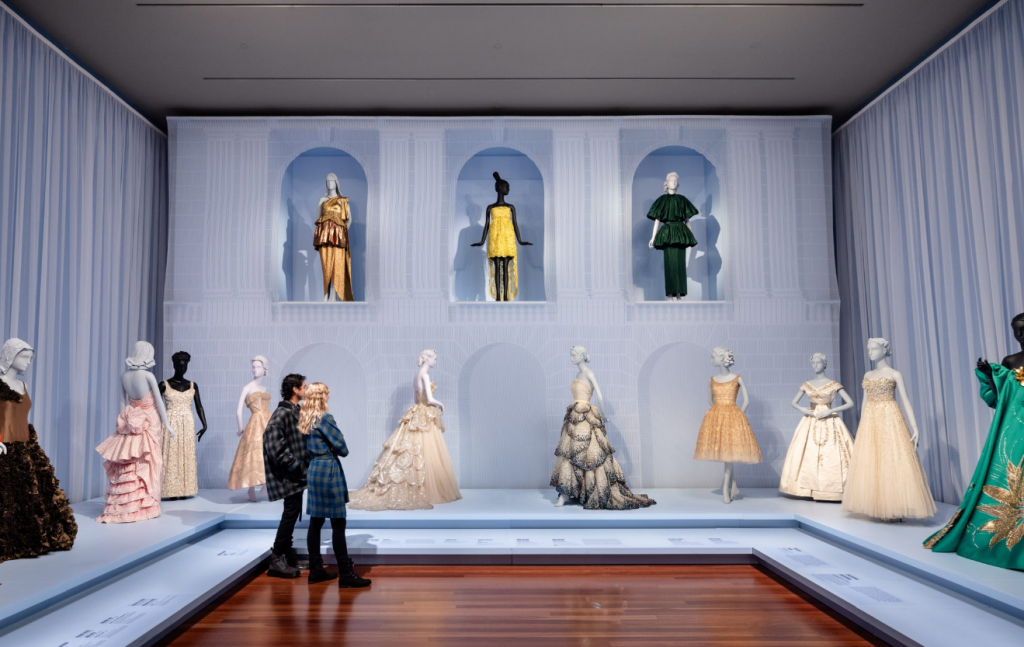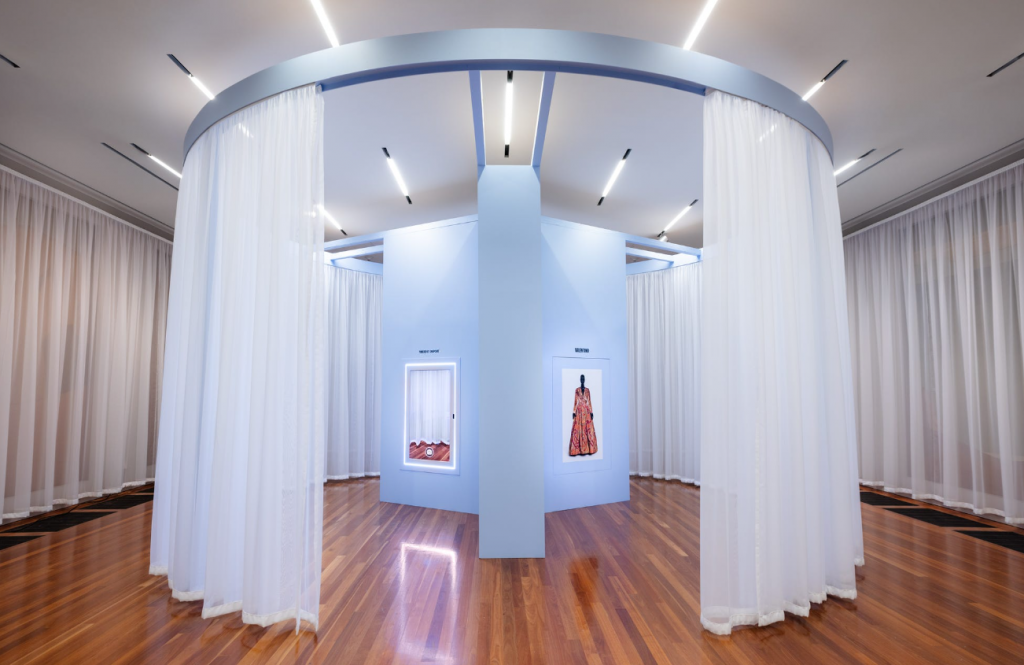Fashioning San Francisco: A Century of Style
Fashioning San Francisco: A Century of Style
Explore the history of San Francisco through fashion. Featuring one of the most iconic collections of 20th- and 21st-century women’s clothing in the United States, this exhibition includes 100 collection highlights, along with local loans of high fashion and haute couture. The first major presentation of our costume collection in over 35 years, it showcases designs from French couturiers, Japanese avant-garde designers, and other pillars of the fashion industry, including Christian Dior, Alexander McQueen, Christopher John Rogers, Comme des Garçons, and Rodarte. The designs on view, many never shown before, reflect San Francisco’s long-standing tradition of self-expression through fashion.
In San Francisco — a city with a vibrant history of embracing radical clothing styles — fashion mavericks have perennially supported boundary-pushing designers. These advocates include retailers, such as Susan Foslien, Sherri McMullen, or the Ospital family of Modern Appealing Clothing (MAC); individuals like Georgette “Dodie” Rosekrans, who famously financed John Galliano’s early collections; and the Fine Arts Museums of San Francisco, which preserve designers’ legacies in their permanent collection. Today, the Museums’ collection boasts avant-garde creations by the Japanese fashion designers Rei Kawakubo, Kei Ninomiya, Junya Watanabe, and Yohji Yamamoto as well as European innovators like Galliano, Jean Paul Gaultier, and Alexander McQueen.
In San Francisco — a city with a vibrant history of embracing radical clothing styles — fashion mavericks have perennially supported boundary-pushing designers. These advocates include retailers, such as Susan Foslien, Sherri McMullen, or the Ospital family of Modern Appealing Clothing (MAC); individuals like Georgette “Dodie” Rosekrans, who famously financed John Galliano’s early collections; and the Fine Arts Museums of San Francisco, which preserve designers’ legacies in their permanent collection. Today, the Museums’ collection boasts avant-garde creations by the Japanese fashion designers Rei Kawakubo, Kei Ninomiya, Junya Watanabe, and Yohji Yamamoto as well as European innovators like Galliano, Jean Paul Gaultier, and Alexander McQueen.
Read more
The term avant-garde is often synonymous with innovative, unusual, and experimental ideas; in fashion, it denotes garments or objects that redefine artistic convention, utilize new tools and techniques, and question the very nature of what constitutes clothing (as noted by Diana Crane in The Transformation of the Avant-Garde: The New York Art World, 1940–1985 [Chicago: University of Chicago Press, 1987]). The work of Chinese American designer Kaisik Wong, who was active in 1970s San Francisco, embodied avant-garde fashion while also exemplifying the tenets of Bay Area counterculture: Wong eschewed mass production, making his clothes by hand, and blurred the physical limits between dress and body with amorphous forms that drew from a wide array of artistic, cultural, and mythical references.
This same period witnessed the emergence of Japanese designers in the international fashion landscape, with designer Kenzō Takada debuting his collection in Paris in 1970, followed by Issey Miyake (1971), Hanae Mori (1977), Yamamoto (1981), and Kawakubo (1981), among others. These artists challenged the conventions they saw in Europe and the United States by employing unusual materials and dressmaking techniques, such as expansive forms, unfinished elements, and asymmetry. When famed fashion editor Polly Mellen saw Yamamoto’s and Kawakubo’s collections in 1982, she proclaimed, “It shows us a whole new wave of dressing. It is modern and free” (Nina Hyde, “Japan’s Runaway Looks,” Washington Post, October 16, 1982).
In Europe, Gaultier, Galliano, and McQueen interrogated the traditional trappings of haute couture with their 1990s collections. While Gaultier injected humor into and glamorized street style as high fashion, Galliano combined diverse sources from various eras to create never-before-seen shapes, styles, and silhouettes. A virtuoso in the art of construction, McQueen fused the best of Savile Row tailoring (Savile Row is a street in London well known for its bespoke men’s tailoring) and haute couture techniques with innovative and unusual materials to create garments that challenged customary notions of race, class, religion, and sexuality — often grouped under collection names that did the same. All three designers presented their works in large-scale runway productions, with showmanship antithetical to the couture tradition of austerity.
In recent decades, a new generation of Japanese designers, namely Ninomiya and Watanabe, have further pushed the limitations of fashion by emphasizing fabrics made by contemporary technologies and using innovative clothing constructions that envelop, obscure, and often overwhelm the body. These garments echo the evolving urban landscape of San Francisco — a city populated by structures that push the confines of modern architecture, likewise made by advanced engineering and with state-of-the-art industrial materials.
From Laura L. Camerlengo, “Avant-Garde: Fashion as Art,” in Fashioning San Francisco: A Century of Style (San Francisco and Petaluma: Fine Arts Museums of San Francisco and Cameron Books, 2024), 243.
Photos © Gary Sexton.



